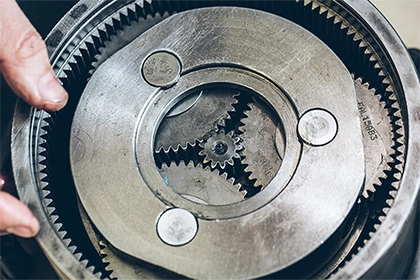
Motor Selection for Conveyor Belt Systems
Selecting the right motor for a conveyor belt system is crucial for ensuring efficient, reliable, and continuous operation in manufacturing environments.
Selecting the right motor for a conveyor belt system is critical for ensuring efficient, reliable, and safe operation. The motor must be capable of driving the conveyor belt at the required speed and load without overexertion or failure. This article will guide you through the critical parameters and considerations necessary for selecting the appropriate motor for a conveyor belt system.

Understanding Conveyor Belt Load and Speed Requirements
-
Conveyor Belt Load: The first step in selecting a motor is understanding the load that the conveyor belt needs to handle. This includes the weight of the items being transported and the total weight of the belt itself. The motor must provide enough torque to start and maintain the movement of this load. To calculate the starting torque necessary for the conveyor belt, you'll need to consider the total mass of the belt and the load on it. Use the formula:
T = F * r, In this context:
T represents torque
F represents the applied force
r represents the distance from the point of force application to the axis of rotation, known as the radius or lever arm.
For instance, for a conveyor belt carrying a load of 200 kg, with force to move estimated at 400N, and drive pulley radius of 0.05m, the required torque would be:
T = 400N * 0.05M = 20Nm
- Required Speed: It relates to how fast the goods need to be transported. Speed requirements affect the choice of motor RPM (Revolutions Per Minute). For a conveyor belt required to move goods at 15 meters per minute with a pulley diameter of 0.1m, the motor RPM can be calculated using:
RPM = (Speed * 60) / (π * diameter) ≈ 2866 RPM
Additional Selection Parameters
- Output Power: The motor's output power should be sufficient to handle the load and speed requirements without excessive stress. Too low power can lead to the motor's inability to move the load, while too high power can be inefficient and costly. Power can be approximated by:
P = T * RPM / 9550
- Power Supply: Ensure the selected motor is compatible with your facility's power supply. Three-phase motors are common in industry for their efficiency, but single-phase motors might be suitable for lighter applications.
- Drive Type: AC motors are typically chosen for their simplicity and cost-effectiveness, while DC motors can offer better speed control. Consider a Variable Frequency Drive (VFD) for AC motors to allow for speed adjustments.
- Rated Torque and Speed Range: The motor's rated torque must meet or exceed the calculated starting torque. A wide speed range allows for flexibility in operation.
- Shaft/Gear Type and Gear Ratio: If the motor's RPM exceeds the system's requirements, a gearbox can reduce the speed to the desired level, increasing torque in the process. A gear ratio is selected based on the difference between motor RPM and system requirements.
- Output Shaft Type: Typically, a keyed shaft is used for conveyor systems for easy attachment of pulleys.
- Protection Level (IP Rating): In dusty or wet environments, a higher IP rating (e.g., IP65) ensures the motor is protected against harmful ingress, which could lead to failure.
Power Supply and Drive Type
- The power supply available can limit the choice of motors. Most industrial settings provide 480V three-phase power, ideal for high-power applications.
- The drive type, such as AC, DC, servo, or stepper, depends on the application's specific needs, such as speed control and positioning accuracy.
Considering the above requirements and calculations:
- Torque Requirement: 20Nm
- Speed Requirement: Approx. 2866 RPM
- Output Power: Assuming a system efficiency of 80%, we might need more than the calculated power. For instance, for a calculated power of 0.75kW, opt for a 1kW motor to ensure a safety margin.
- Drive Type: An AC motor with a VFD, for efficient operation and speed control.
- Power Supply: Assuming the facility has a three-phase power supply; a three-phase AC motor is preferred.
- Rated Torque and Speed Range: A motor with a rated torque exceeding 20Nm and an RPM range covering 2866 RPM.
- Gear Ratio: If the available motor has a higher RPM, a gearbox may be necessary. For example, for a motor with 3600 RPM, a gear ratio of approximately 1.25 can reduce it to the required speed.
- Protection Level: For a typical industrial environment, at least an IP54 rating is advisable, but this would increase for more demanding environments.
Conclusion
The process of selecting the right motor for a conveyor belt system requires careful consideration of several interrelated factors, including load, speed, power requirements, and environmental conditions. By systematically analyzing these factors and adhering to the principles outlined above, you can ensure the selection of a motor that will perform reliably and efficiently in your specific conveyor belt application, optimizing both performance and cost-effectiveness.



Leave a Comment